library(ggplot2)
str(diamonds)
'data.frame': 53940 obs. of 10 variables:
$ carat : num 0.23 0.21 0.23 0.29 0.31 0.24 0.24 0.26 0.22 0.23 ...
$ cut : Ord.factor w/ 5 levels "Fair"<"Good"<..: 5 4 2 4 2 3 3 3 1 3 ...
$ color : Ord.factor w/ 7 levels "D"<"E"<"F"<"G"<..: 2 2 2 6 7 7 6 5 2 5 ...
$ clarity: Ord.factor w/ 8 levels "I1"<"SI2"<"SI1"<..: 2 3 5 4 2 6 7 3 4 5 ...
$ depth : num 61.5 59.8 56.9 62.4 63.3 62.8 62.3 61.9 65.1 59.4 ...
$ table : num 55 61 65 58 58 57 57 55 61 61 ...
$ price : int 326 326 327 334 335 336 336 337 337 338 ...
$ x : num 3.95 3.89 4.05 4.2 4.34 3.94 3.95 4.07 3.87 4 ...
$ y : num 3.98 3.84 4.07 4.23 4.35 3.96 3.98 4.11 3.78 4.05 ...
$ z : num 2.43 2.31 2.31 2.63 2.75 2.48 2.47 2.53 2.49 2.39 ...
Factor variables are removed as they make little sense in histogram
library(reshape)
d <- melt(diamonds[,-c(2:4)])
ggplot(d,aes(x = value)) +
facet_wrap(~variable,scales = "free_x") +
geom_histogram()
ggsave("plot.jpeg")
 The graph gets stored in the default directory - query
The graph gets stored in the default directory - query getwd() to know the path.
melt allows us to use the resulting grouping variables (called variable) to split the data into groups and plot a histogram for each one.Used scales = "free_x"because each of the variables has a markedly different range and scale.
 The graph gets stored in the default directory - query
The graph gets stored in the default directory - query